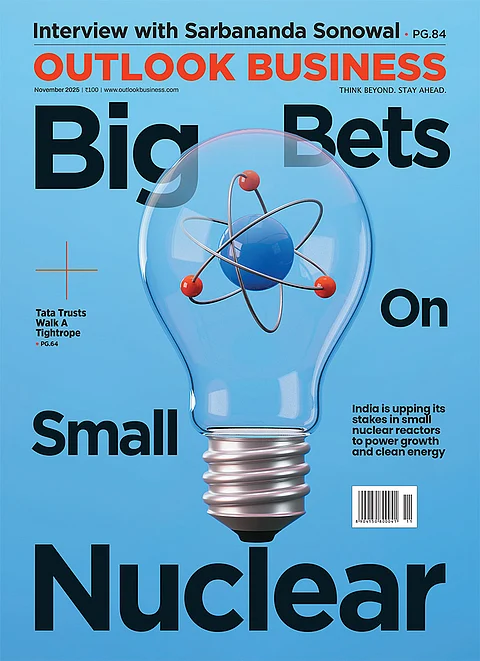As India accelerates its journey towards clean energy and climate goals, one of the biggest opportunities – and challenges – lies in integrating its micro, small and medium enterprises (MSMEs) into this transition. These businesses form the bedrock of India’s economy, contributing nearly 30% to GDP, employing over 110mn people and accounting for close to 40% of the country’s exports.
While their economic footprint is vast, their environmental footprint is equally significant. MSMEs account for approximately 25 per cent of industrial energy demand and 15 per cent of industrial greenhouse gas emissions. India cannot achieve its decarbonisation targets without bringing this sector into the fold.
The Problem: Dispersed, Informal and Underserved
Despite their importance, MSMEs face deep-rooted structural challenges. They are highly dispersed, often concentrated in clusters, but difficult to reach at scale, resulting in high transaction costs. Many operate informally, limiting access to finance, technology or even reliable data. Their small size and operational limitations mean that few have the resources to invest in energy-efficient upgrades, adopt new technologies, or comply with global carbon regulations such as the EU’s Carbon Border Adjustment Mechanism (CBAM).
As global trade standards tighten and climate action gains priority, this vast segment risks falling further behind unless new solutions are introduced.
Unlocking MSME Potential
The potential is clear. MSMEs can achieve 15-20% energy savings through low-cost interventions with payback periods of just under two years. With higher investments, savings can double. Yet, most of this potential remains untapped because there are no clear mechanisms in place to channel finance, enable aggregation, or reward performance. Market-Based Mechanisms (MBMs) could change that.
MBMs are tools that use market signals – incentives, pricing, competition and trading – to drive better environmental outcomes. Instead of relying solely on regulation, MBMs allow flexibility. Businesses that perform well, by cutting emissions or improving efficiency, can generate tradable credits or receive incentives, while those unable to meet targets can buy these credits to fulfil obligations.
India already has such frameworks for large industry. The Perform-Achieve-Trade (PAT) scheme enables trading of energy-saving certificates among energy-intensive units, while the Carbon Credit Trading Scheme (CCTS) aims to establish a domestic carbon market. But MSMEs have been left out of these programmes due to their scale, informality and lack of regulatory clarity.
Carbon Catalyst: MSMEs Take the Leap
Today, there’s no legal mandate or structured mechanism for MSMEs to participate in the compliance carbon market. Including them in PAT or CCTS would require amending the Energy Conservation Act, lowering the minimum consumption thresholds and expanding eligible sectors.
That’s a significant undertaking. While regulatory reform is essential, there's a more immediate route that India can take to empower its MSMEs in the short term.
Voluntary market-based mechanisms provide a practical and scalable starting point as they do not require the same legal infrastructure as compliance markets.
Two design options can be explored:
● Incentive-linked action: Instead of imposing emission reduction targets, offer incentives for pre-defined actions or outcomes, such as switching to efficient equipment or reducing energy use. These performance-based incentives could come from government schemes or corporate buyers with sustainability commitments.
● Tradable GHG credits: MSMEs that cut emissions beyond a baseline could earn tradable credits. Entities under mandatory schemes like PAT or CCTS could be allowed to buy these credits to partially fulfil their obligations – giving MSMEs access to finance and bigger players access to cost-effective reductions.
Time to Act
The urgency is real. Global carbon pricing measures like CBAM are already being implemented, and Indian MSMEs – especially those in export-linked sectors – must demonstrate credible low-carbon practices to remain competitive.
Additionally, the homogeneity of many MSME units in terms of technologies used and production processes allows for demand aggregation. By bundling multiple MSMEs in a cluster, it becomes possible to develop innovative financing and implementation models, such as through Energy Service Companies (ESCOs) – that can deliver results at scale.
India needs to act now to unlock the potential of its MSMEs as drivers of climate action. Voluntary market-based mechanisms can serve as a launchpad. Done right, MBMs can address India’s twin goals of competitiveness and sustainability, bringing much-needed investment into MSMEs, addressing data asymmetry, enabling energy savings and preparing the sector for future market opportunities.
MSMEs may be small individually, but together they represent one of the most powerful levers in India’s energy transition. It’s time to build the mechanisms that allow them to lead.
(The writer is senior director–research and programmes, Alliance for an Energy Efficient Economy)
























